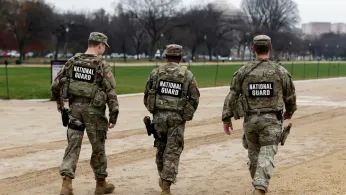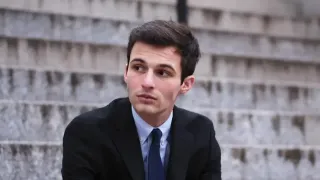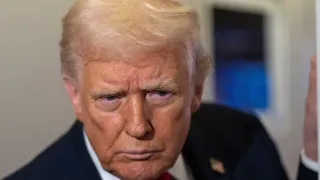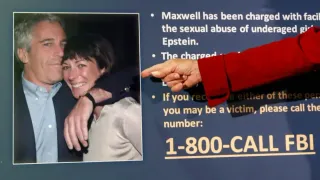
9 hours ago
Trump Sent National Guard Troops to Washington in August. Some Are Armed. Some Have Cleaned Parks
The Associated Press READ TIME: 3 MIN.
The two members of the West Virginia National Guard who were shot in Washington on Wednesday were among more than 2,000 troops deployed to the nation’s capital as part of President Donald Trump’s crime-fighting mission that involved taking over the local police department. The president quickly ordered 500 more National Guard members to the city after the shooting.
The members were shot about two blocks from the White House. Officials said they were hospitalized in critical condition. Washington’s mayor said they were victims of a ”targeted shooting.”
Here’s a look at the National Guard’s presence in Washington:
Trump launched the deployment on Aug. 11 when he declared a public safety emergency and said his administration also would be removing homeless encampments.
He said he aimed to reduce crime. But the city’s attorney general said violent crime in the district reached 30-year lows last year and was down an additional 26% this year.
There were 2,188 troops assigned to the joint task force that took over the city’s policing, according to the government’s latest update.
As of early November, the D.C. National Guard had the largest number on the ground with 949. West Virginia was next with 416 guardsmen.
Last week, at least 160 West Virginia troops volunteered to extend their deployment to Dec. 31. The others returned to West Virginia on Nov. 17.
Other states with forces in Washington early this month were Louisiana, Mississippi, Ohio, South Carolina, Georgia and Alabama.
Officials with several of the states told The Associated Press they planned to end their deployments by Nov. 30 but indicated that also depended on whether they received orders to extend their stay.
The D.C. National Guard has had their deployment order renewed through the end of February.
Some troops have been armed and provided a military presence in public spaces, especially in federal parks, subway stations and Union Station. Others have done yard work, removed graffiti and cleaned parks.
In early October, the joint task force said troops cleared 1,150 bags of trash, spread 1,045 cubic yards (0.8 cubic meters) of mulch, removed 50 truckloads of plant waste, cleared 7.9 miles (12.7 kilometers) of roadway, painted 270 feet (82 meters) of fencing and pruned 400 trees.
Since then, most task force daily updates offered only new troop figures and no summaries of beautification efforts.
Their presence has unnerved some residents, who see it as presidential overreach on law enforcement. Others say they approve, particularly of a contingent of National Guard troops focused on community improvement efforts.
D.C. Mayor Muriel Bowser, a Democrat whose city budget and laws are determined by Congress, has walked a fine line between appeasing Trump and pushing back on the deployment. She has acknowledged that the campaign has helped push down crime, while arguing that the out-of-state National Guard deployment has not been “an efficient use of those resources.”
Some National Guard troops have been armed since late August.
The military said some units on certain missions would have handguns and others would have rifles. These missions would include units on patrol throughout the capital.
All units with firearms were trained and operating under strict rules for use of force, the military said.
The joint task force said the military’s rules allowed force to be used “only as a last resort and solely in response to an imminent threat of death or serious bodily harm.” It said troops were committed to protecting “the safety and wellbeing” of Washington’s residents.
On Nov. 20, a federal judge ordered the Trump administration to end the deployment, saying it illegally intruded on local officials’ authority to direct law enforcement in the district. U.S. District Judge Jia Cobb put her order on hold for 21 days to allow for an appeal.
The District of Columbia had challenged the deployment, saying it was an illegal use of the military for domestic law enforcement. The lawsuit said it violated Washington’s Home Rule Act, signed by President Richard Nixon in 1973, and wrongly asserted federal control over units from other states.
Cobb found that while the president does have authority to protect federal functions and property, he can’t unilaterally deploy the D.C. National Guard to help with crime control as he sees fit or call in troops from other states.






